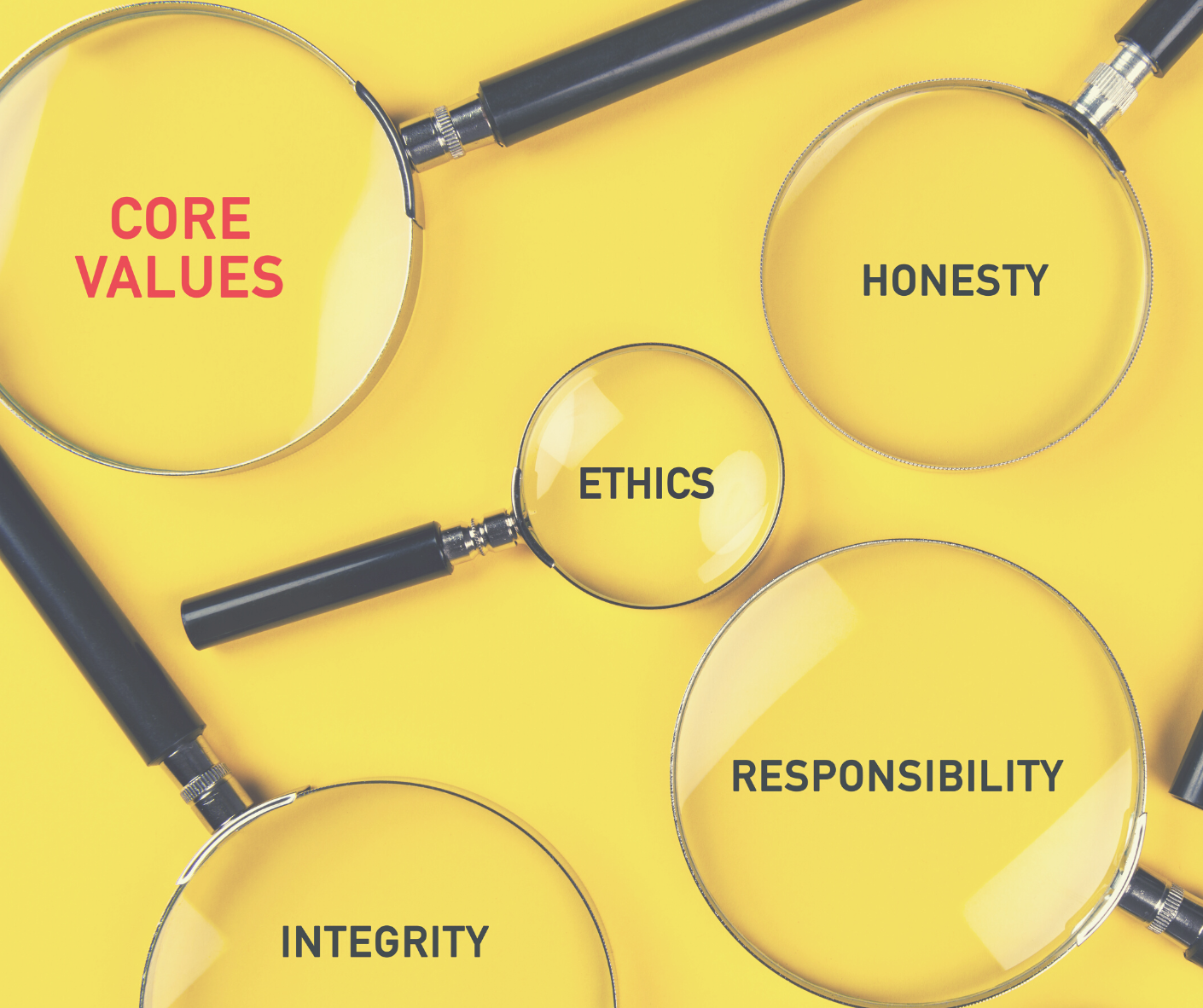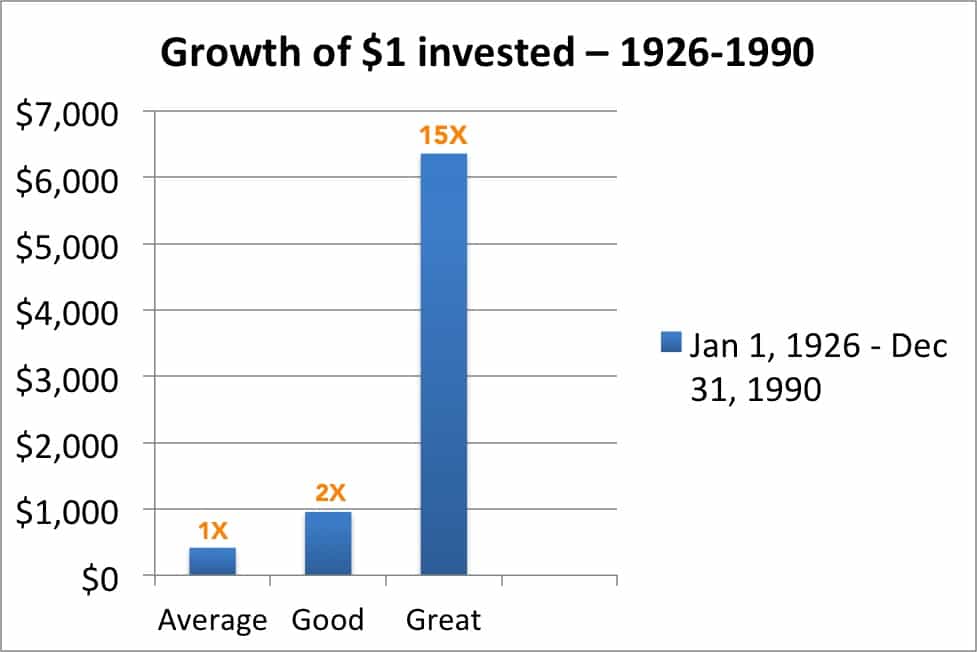I’ve discovered that love is at the center of authentic leadership. One of the best ways for a leader to show that love within their organization is to discover their Core Values. Core Values are the center of what makes an organization visionary, which will promote organic growth. Keep reading to find out more about Core Values, how you discover your Core Values, and why they are important to the health and growth of your organization.
When Jesus is asked what the greatest commandment is, he responds by saying, “Love God with all your heart, soul and strength, and (love) your neighbor as you love yourself” (Mathew 22:37). Apart of loving your neighbor as you love yourself, is also knowing yourself through your Core Values.
Core values CANNOT be learned. They must reflect “who you are.” Core values are NOT a skill you can learn. You cannot give what you do not have.
While core values cannot be learned, you can, indeed, discover your own core values!
What Type of Organizations Get Results?
While I was attending a monthly CEO group meeting at the CEO Institute, one of the CEOs said something that prompted me to write down this statement…
I want to be a Values-Driven Organization that achieves results; not a Results-Driven Organization that has values. Share on XWhat I have now learned is that every organization has values, even if they haven’t been discovered yet. I have also found that most organizations are RESULTS-Driven and not VALUES-Driven.
“Who are you?” is a vital question that is key to understanding the unique leader you were created to be.
Every leader should discover “who they are” because of the tremendous results achieved by values-driven organizations.
Not long after that monthly CEO Group meeting, our leadership team wanted to do a review of the book, Built to Last, by Jim Collins and Jerry Porras. Collins & Porras really opened my eyes to understanding that Core Values were driven by the leader of the organization or the leader of a department within an organization.
The authors looked at some of the United States’ most successful corporations, many dating back to the 1800s.
Using decades of data and exacting criteria for evaluation, Collins and Porras compared three distinct groups of organizations:
- Visionary companies– these companies are the best of the best, described as “premier institutions in their industries, widely admired by their peers and having a long track record of making a significant impact on the world around them.”
- Comparison companies– close competitors to the visionary companies who have achieved a high level of success, but not to the extent of the visionary companies.
- Average companies– as represented by the average performance of those companies in the general stock market.
Extraordinary Results
What is amazing was the extraordinary long-term financial performance of these enduring, great visionary companies. Collins and Porras contrasted the three types of companies by showing what $1 invested on Jan 1, 1926 would grow to by December 31, 1990. Here’s what they found:
From 1926 to 1990, your investment in the good, “comparison,” organizations would have earned two times more than the general stock market – which is pretty good.
But your investment in the enduring, great visionary organizations would have been 15 times greater than the general stock market.
WOW!!! So, what made these enduring, great visionary organizations different?
Preserve the Core and Stimulate Progress
Collins and Porras discovered that the enduring, great visionary organizations did a couple of things very well. The authors summed it up by stating that visionary organizations Preserved the Core and Stimulated Progress.
To Preserve the Core and Stimulate Progress meant the organization’s Core Ideology was always fanatically protected and never changed while they “stimulated progress” by endlessly adapting their organization and operating practices.
Over time, these visionary organizations changed almost everything, like policies, procedures, product lines, competencies, organization structure, reward systems, strategies, tactics, and performance goals.
But the one thing that they did not change was their Core Ideology. Collins and Porras define “Core Ideology” as core values + purpose.
My Journey’s Success with Core Values
Every journey begins with a step. While I studied this book and thought about my own organization, I started to realize that my search for our beliefs, or core values, was a key part of achieving significant and sustainable growth.
As the leader, I learned that it was important for me to identify and champion our own core values.
Understanding that I wanted to be a values-driven organization was the first glimpse into my deeper core values, but I still had a lot to learn!
How about you? Are you a RESULTS-Driven company that has values or a VALUES-Driven organization that achieves results? Would you like to be a VALUES-Driven Organization?
There was a growing sense that I needed to figure out who I was, bone deep. Fortunately, I discovered some questions that really helped me sort things out. And they can help you too.
I became almost consumed with the question, “Who am I?” because the process was so challenging. I found myself thinking about the question for months when I went to bed, when I got up in the morning, while I was bicycling or on long walks, in the shower, driving to work, and on and on.
Two Steps Every Leader Can Take to Learn “Who they are”
Step 1 – Start by Reflecting
Reflecting and thinking back to when I was a very little boy and looking over my life, I began to ask myself questions like:
- What do I stand for?
- What am I all about?
I don’t know about you, but these questions were some of the most difficult questions I have ever considered.
Step 2 – Then Go Deeper
Going through this process I learned that most people or organizations only have three to six Core Values and that Core Values are NOT:
- What do you or the organization aspire to be like
- Words that you like because they sound good
The Present
As I would go through my day, my antenna was up, and I was continually observing and asking myself the following questions:
- Why did I say what I just said?
- Why was it important for me to say it that way?
- Why did I do what I just did?
- Why was that important for me to do it that way?
The Past
Next, I started to reflect on my past by asking questions like:
- Who, even from an early age, influenced what I said and did?
- When did they influence me?
- Where did they influence me?
- How was I affected by these influencers?
But I still did not know “Who I was”.
Finally, I got a breakthrough! By asking those questions, I was beginning to understand a few things about myself… characteristics that I could trace back to my childhood. I was learning that there is something inside me that is expressed in my passions for …
- Life of Learning– I have a thirst for learning.
- Truth– I stay focused on the right decision regardless of the consequences.
- Team Above Self– I have a need to encourage and lift-up other people so I can serve them more.
- Give My Best– Performing to the best of my ability is not a sometime thing; it’s an all-time thing.
- Relationships– It is all about people and not
- Make a Difference– I desire to positively impact the lives of others.
I was making progress and getting closer to discovering “Who am I,” but I still could not fully and completely answer that question.
Two Questions Will Help You Discover Your Core Values
Do you have a thinking chair? For as long as I can remember, I’ve had a chair that I call my thinking chair. It’s my favorite chair in the whole house. This chair is where I go to think, reflect, and evaluate.
I vividly remember what happened on a sunny afternoon in my thinking chair almost a decade ago…
One Sunday afternoon, I sat down in my thinking chair. I don’t know how to explain it, but I was finally ready to discover “Who am I”.
The afternoon revolved around two questions, and I think so highly of these questions that I believe:
Every person can discover “who am I?” by asking themselves two simple questions.
First question
I asked the following question of myself to get started:
What are the things that I have a passion for, things that I get excited about, and things that give me energy? Share on XI wrote down some words that came to my mind as I thought about this question. These words formed a list down the left side of the page.
Second question
Then I thought about looking on the “other side of the coin,” and asked myself the following question:
What are the things, that when left undone, make me angry, mad, upset, and even foaming at the mouth? Share on XThen I jotted down some words in answer to that question. I listed these words down the right side of the page. The entire page contained about 30 words.
As I continued to think about these questions and reviewed the two lists, I realized that there were similar words on both sides of the page. I circled the matching words and came up with six-word pairs.
Core Values Emerge!
When I looked at those words, it hit me…WOW!!! This is “Who I am”! These two simple questions helped me uncover my true core values. The six words common to both lists were:
- Personal Growth
- Integrity
- Add-Value
- Excellence
- Relationships
- Significance
I was able to finally discover “Who am I?” only after spending weeks and months going through the process of thinking and reflecting and asking these questions.
Isn’t it interesting that these two, very different questions yielded several similar ideas?
Discover Your Core Values Now
What if these same two questions hold the key to unlocking your core values? What might happen if you set aside time to really think about these two questions, and then took time to reflect on your answers?
The purposes of a person’s heart are deep waters, but one who has insight draws them out. Proverbs 20:5
I’ve learned that everyone must discover their own core values. My list is not THE list of values – we each have a unique set of core values.
What are your core values? What process have you used to discover your core values?
If you are interested in learning more about Core Values listen to True North Leaders guest, Terry Looper as he shares that Employee-First Cultures Create Christ-Like Organizations.


